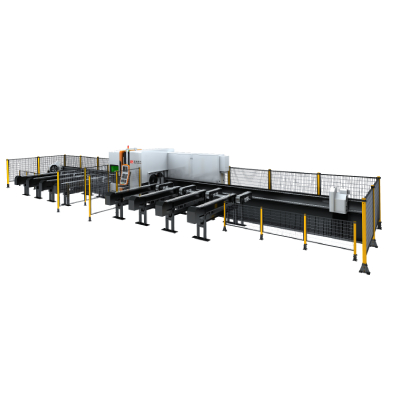In the fast-paced realm of manufacturing, efficiency and precision are paramount, especially when working with materials like steel. Steel plate cutting machines have emerged as vital tools in the industry, revolutionizing the way steel plates are processed and prepared for various applications. These machines facilitate the cutting of steel plates into specified dimensions with exceptional accuracy, which is crucial for industries such as construction, automotive, and shipbuilding. In this article, we will explore the functionality, types, benefits, and future of steel plate cutting machines.
At its core, a steel plate cutting machine is designed to slice through thick sheets of steel, transforming cumbersome materials into manageable parts suitable for further processing or direct application. This cutting process can be executed using various techniques, including oxy-fuel cutting, plasma cutting, laser cutting, and waterjet cutting. Each method has its own advantages, making it essential for manufacturers to choose based on their specific operational requirements and desired outcomes.
Oxy-fuel cutting is one of the oldest and most well-known methods, wherein a flame is used to melt the steel while pure oxygen accelerates the combustion, creating a high-temperature jet that cuts through the material. This method is particularly effective for thick steel plates, making it a popular choice in industries that require heavy-duty cutting capabilities. However, it may not offer the precision demanded in intricate designs.

Enhancing Efficiency and Precision: The Role of Steel Plate Cutting Machines in Modern Manufacturing
Plasma cutting, on the other hand, utilizes ionized gas to create a superheated plasma arc that slices through metal with more accuracy and speed compared to oxy-fuel cutting. This method is suitable for a wide range of material thicknesses and is often employed in applications requiring detailed cuts or complex shapes. The advancements in plasma cutting technology have led to the development of machines capable of automated cutting, which enhances productivity and reduces labor costs.
Laser cutting machines operate by focusing a powerful laser beam onto the steel plate, melting and vaporizing the material along the desired cutting line. This technology offers the highest level of precision, enabling manufacturers to produce elaborate designs with minimal material wastage. Furthermore, laser cutting can achieve intricate patterns that are virtually impossible to create using traditional methods. However, the initial investment and operating costs of laser cutting machines can be higher than other techniques.
Waterjet cutting combines high-pressure water with abrasive materials to erode the steel plate into the desired shape. This method is favorable for cutting heat-sensitive materials or complex designs that cannot tolerate thermal distortion. Waterjet cutting does not produce heat-affected zones, allowing for clean edges and preventing the metal from warping. However, it may be slower than other cutting techniques, potentially impacting production speeds.
The adoption of steel plate cutting machines offers numerous benefits to manufacturers. First and foremost, they drastically improve cutting speed and reduce manual labor, which can lead to significant cost savings. The efficiency of these machines allows companies to increase production capacity while ensuring that high-quality standards are maintained. Furthermore, the precision afforded by modern cutting technologies minimizes material wastage, contributing to a more sustainable production process.

Enhancing Efficiency and Precision: The Role of Steel Plate Cutting Machines in Modern Manufacturing

Enhancing Efficiency and Precision: The Role of Steel Plate Cutting Machines in Modern Manufacturing
Another significant advantage is the versatility of steel plate cutting machines. As industries continue to evolve, the need for customized components grows. These machines can easily adapt to different projects, allowing manufacturers to cater to unique specifications and designs without investing in a new set of equipment. This flexibility is crucial for manufacturers looking to stay competitive in an ever-changing market.
Moreover, the automation of steel plate cutting processes through CNC (Computer Numerical Control) technology has enabled manufacturers to streamline operations further. CNC-controlled machines reduce the risk of human error, allowing for repeatable accuracy and consistency with each cut. As technology progresses, the integration of AI and IoT (Internet of Things) in manufacturing processes is likely to enhance the capabilities of steel plate cutting machines even further.
In conclusion, steel plate cutting machines are indispensable tools in modern manufacturing, offering exceptional efficiency, precision, and versatility. As industries continue to demand higher-quality products with intricate designs, the role of these machines will only become more critical. By embracing the latest technologies, manufacturers can ensure that they remain at the forefront of their fields, capable of meeting the diverse needs of the market while fostering sustainable practices. The future of steel plate cutting holds immense potential, paving the way for innovative solutions that will shape the manufacturing industry for years to come. 1500*iber Laser Cutting

